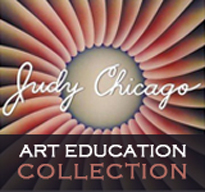Forum Replies Created
-
AuthorPosts
-
October 15, 2014 at 11:14 pm in reply to: 2. Is emphasis on content and finding personal voice important? #4066
William
ParticipantHello all, this is Bill Catling, I teach studio art in Southern California, in my 35th year in the classroom and I am still finding new ways to engage students in the process of “finding their voice.” I believe that all assignments from entry level skill building courses to upper division cap stone experiences can include content and personal voice. I have developed a very simple plan that has great flexibility in both viewing work and making art.
The idea is simply a five level organizer:
1. Idea, content, concept or set of possibilities
2. Material(s) selected to work with
3. Transformation of the materials
4. Presentation
5. Intended audienceCritique then becomes a conversation about how the idea interacted with the selected material and what decisions were made in regards to how the material was handled. Presentation is explored as to how it impacted the way the work was received and then the artist gets to explore who their audience is through discussion and peer interaction. The student gets to isolate how the critique can be applied by giving the comments specific application in each area and the “success” of the work can be examined in light of the different aspects of the organizing tool.
Another important element is to have someone else in the class take notes during the critique so that the artist can focus on listening and go back over the comments later and make decisions on which critique voices to respond to in either altering the work or in light of approaching the next work of art.
Lastly to assist students to develop their own voice it is essential that they ask for specific critique lenses to be applied in order to direct the comments to things they are concerned with. It is not enough to just say it is artist centered but the artist needs to be intentional about how they want the work to be evaluated, ie formal, psycho-analytic, structural, post-structural, post-colonial, feminist, content based, series or body of work, etc
Each critique lens will elicit different responses and provide the work with alternate ways of engagement. I have been practicing this approach since I had the privilege of working with Judy on the 2003 Envisioning the Future project and benefitted from the pedagogy she shared with us as small group leaders in the larger project.
Thank you Judy!
-
AuthorPosts
